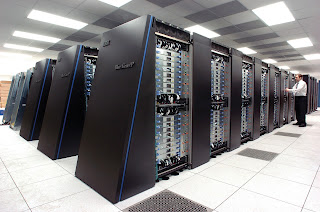A Linux server is a sophisticated and high performance variant of the Linux open source operating system which is designed to cope with the more demanding needs of business applications such as network and system administration, database management and Web services.
Linux servers are being prefered over their competitors for their security, stability and flexibility advantages. Leading Linux server operating systems include RedHat, Debian and SuSE but there are also many others which are based on the source code of these Linux variants. These alternatives include CentOS and Ubuntu who have gained a lot of momentum in recent years because of their low cost and often free license. There are many small business around the globe using servers that are operating with Linux or one of its variants.
Linux and its variant distributions have long been used as server operating systems. In September 2006, Netcraft reported that eight of the ten most reliable internet hosting companies ran Linux distributions on their web servers. Linux distributions are the cornerstone of the LAMP (Linux, Apache, MySQL, Perl/PHP/Python) server-software combination which has achieved popularity among developers, and which is one of the more common platforms for website hosting.
Pricing and open-source model of Linux distributions make it increasingly popular on mainframes in the last decade. In December 2009, computer giant IBM reported that it would predominantly market and sell mainframe-based Enterprise Linux Server. Linux distributions are also commonly used as operating systems for supercomputers: since November 2010, out of the top 500 systems, 459 (91.8%) run a Linux distribution. IBM's Sequoia is the world's most powerful supercomputer which use Linux as an operating system. IBM's Sequoia became operational in 2011.

Small and medium size businesses feel the need to have a managed IT service which handels their business related sensitive data and information. A hosted small business server is provided by a managed service provider (MSP) such as Microcom IT or Cheap VPS UK. There are many other companies providing similar type of services.









